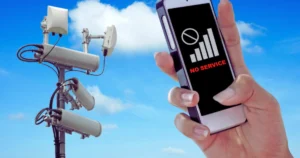ONE YEAR WARRANTY | FREE SHIPPING ALL OVER INDIA | 24x7 TECHNICAL SUPPORT
 01 January 2025
01 January 2025
Signal boosters are vital in today’s connected world to ensure uninterrupted communication. It is essential in locations where a poor wireless connection negatively affects communication. Sometimes users face issues that affect their performance. These devices are built to enhance signal strength and improve call quality. This blog will discuss some common signal booster issues and provide troubleshooting tips to help you resolve them and maintain optimal connectivity.
It’s important to learn about signal booster performance before beginning any troubleshooting. A signal booster typically consists of three main components:
These components work together to ensure that even in areas with poor reception, you can experience stronger, more reliable cellular signals.
Check External Antenna Placement: The external antenna should be placed in an area where it can receive the strongest possible signal. Ideally, this is on the roof or in a location free from obstructions like trees or tall buildings.
Reposition the Internal Antenna: Ensure that the internal antenna is located centrally in the area where you need the boosted signal. Keep it away from large metal objects that could interfere with the signal.
Verify Cable Connections: Make sure all cables are securely connected and undamaged. Loose or faulty connections can significantly reduce signal strength.
Increase Separation: Try to maximize the distance between the external and internal antennas. If possible, position them on opposite sides of a wall or in different rooms.
Use Shielding: If increasing distance isn’t feasible, use barriers such as walls or metal objects to block direct paths between the antennas, which can help reduce interference.
Check Booster Settings: Some boosters have adjustable settings for gain control. Reducing the gain slightly can sometimes resolve interference issues.
Inspect the Power Source: Ensure that the power supply is plugged into a working outlet. Test the outlet by plugging in a different device to ensure it’s functioning properly.
Check Power Cables: Look for any visible damage to the power cables. If damaged, replace the cable with a new one that matches the booster’s specifications.
Reset the Booster: Some boosters have a reset button. Try resetting the booster by turning it off, waiting for a few minutes, and then turning it back on.
Relocate the External Antenna: Moving the external antenna to a different location might help you to stabilize the signal. Try several positions to find the best spot.
Adjust Gain Settings: If your booster has manual gain controls, experiment with adjusting them. Sometimes, lowering the gain can stabilize the signal.
Monitor Environmental Changes: Weather conditions, construction, or other changes in the environment can impact signal strength. If you notice a pattern, try to identify external factors that may be influencing your signal.
Optimize Internal Antenna Location: Place the internal antenna in a central location to maximize coverage. If your building has multiple floors, consider using additional internal antennas.
Consider Building Materials: Walls made of concrete, metal, or thick materials can significantly reduce the coverage area. If possible, reposition the antenna to avoid such barriers.
Upgrade Your System: If the coverage area is still insufficient, you might need a more powerful booster or additional components like a secondary internal antenna.
To minimize the chances of encountering signal booster issues, consider the following preventative measures:
If you’ve tried the troubleshooting tips above and your signal booster is still not performing as expected, it might be time to seek professional help. A certified technician can perform a detailed assessment and provide expert solutions tailored to your specific situation. In some cases, the issue may be due to a faulty component that needs replacing or an incompatibility with your carrier’s network.
Signal boosters are invaluable tools for improving cellular connectivity, but like any electronic device, they can encounter issues. By understanding common problems and applying the troubleshooting tips provided in this blog, you can ensure that your signal booster operates effectively, providing you with a strong and reliable cellular signal. Regular maintenance and proper installation are key to avoiding many of these issues, ensuring that you stay connected no matter where you are.
Stay connected wherever you are with SIGLIFT! No more dropped calls or weak signals—just strong, reliable coverage when you need it most.